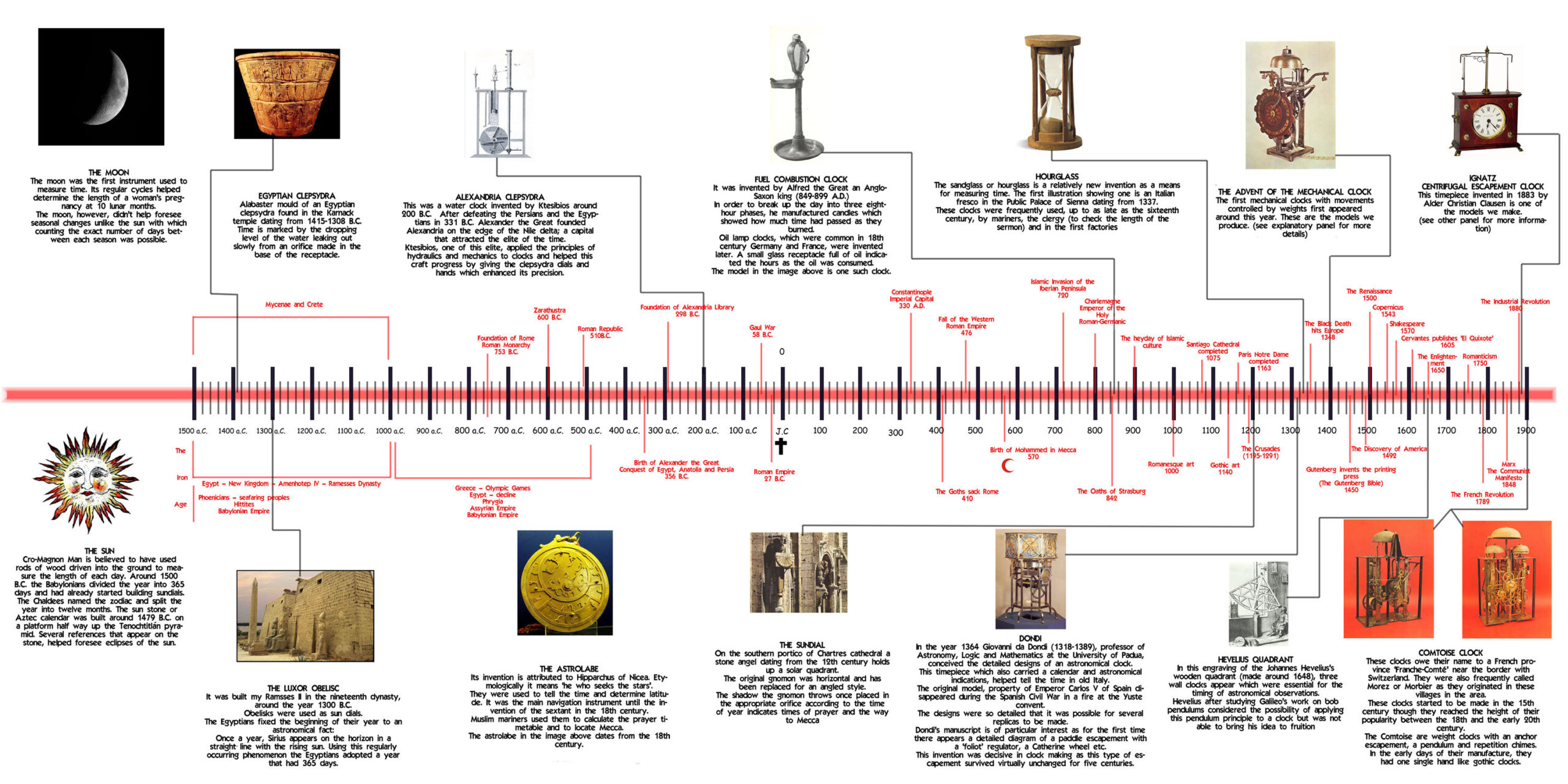
It was in the Gothic period that the first mechanical watch of our era appeared, (the well-known Greek Antikitera mechanism deserves a special mention). The mechanical clock is the machine par excellence, the pristine mechanism. From this rough set of wheels and iron bars that make up a Gothic clock derive, not only our modern chronometers, but all our present and future mechanization. No one remembers anymore that from this primeval mechanism come the keys to the firearms, all the spring-loaded gadgets and all the ingenuity that made automation possible.
All the centres of “industrialisation” of the Renaissance developed from a still gothic charter: the manufacturer of mechanical watches. Let us try to explain in broad terms the outline of what we call a mechanical watch, – the primitive time-recording mechanism – which is to remain unchanged in its basic components to this day.
First of all, we need a motor capable of moving the mechanism. It will be constituted first of all by the force of gravity in the form of weights and then by a spring in table-top or portable watches. The force of these motors is transmitted to a large cogwheel (real wheel) and this in turn to other wheels (crown wheel and catalin wheel), in such a way that the last mobile will turn very quickly, while the one closest to the driving force will turn very slowly. … The slow and regular functioning of the watch is imposed by a regulator which represents the standard of time.

This fundamental mechanism is composed of the escapement and the regulator and deserves a detailed description: the escapement is the first known and despite subsequent highly refined inventions, it was to last in certain watches until the middle of the 19th century. This escapement is composed of an axle with two small pallets attached to it, forming a right angle between them. These paddles engage alternately in the teeth of a wheel called a “crown” or “meeting wheel” and popularly known as the “catalin wheel” in Spain, in memory of the instrument used for the torture of this Saint.
The driving force makes the Catalin wheel turn, but the alternate swaying of the paddles slows down its progress, which is carried out by small jumps; it is this syncopated turning that produces the characteristic “tick-tock” of the clock and is the basis of all the exhaust systems. But this alone does not guarantee the slow and regular running of the watch, it must be complemented by a regulator or time controller. The most primitive systems consist of a simple balance wheel called a “rocker” or “foliot”, which is a slotted bar with adjustable weights at its ends. This system is rigidly attached to the end of the paddle wheel escapement and has the task of imposing a certain frequency on the clock. Naturally, the hour hand of these clocks has a single hand; the minute hand will appear with the pendulum, in the 18th century.

The entire mechanism of a Gothic clock is made of iron and contained in a frame or cage without plates, made of the same metal. This is so characteristic of the period that they are also known as “iron clocks”, or “skeleton clocks” without a case. The laces of the cage are secured by means of cotter pins and not a single screw is found in the entire mechanism until 1550.
